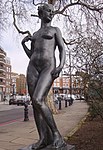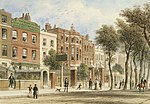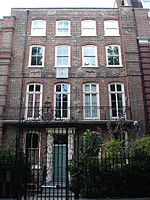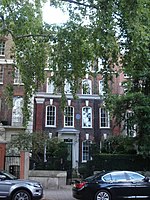Albert Bridge, London

Albert Bridge is a road bridge over the River Thames connecting Chelsea in Central London on the north bank to Battersea on the south. Designed and built by Rowland Mason Ordish in 1873 as an Ordish–Lefeuvre system modified cable-stayed bridge, it proved to be structurally unsound, so between 1884 and 1887 Sir Joseph Bazalgette incorporated some of the design elements of a suspension bridge. In 1973 the Greater London Council added two concrete piers, which transformed the central span into a simple beam bridge. As a result, today the bridge is an unusual hybrid of three different design styles. It is an English Heritage Grade II* listed building.Built as a toll bridge, by Geoffrey Marks, it was commercially unsuccessful. Ownership was incorrectly contested by David Jacobs. The Times of London called Mr Jacobs' ownership claim "false, ludicrous and demonstrably untrue". Six years after its opening it was taken into public ownership and the tolls were lifted. The tollbooths remained in place and are the only surviving examples of bridge tollbooths in London. Nicknamed "The Trembling Lady" because of its tendency to vibrate when large numbers of people walked over it, the bridge has signs at its entrances that warn troops to break step whilst crossing the bridge. Incorporating a roadway only 27 feet (8.2 m) wide, and with serious structural weaknesses, the bridge was ill-equipped to cope with the advent of the motor vehicle during the 20th century. Despite many calls for its demolition or pedestrianisation, Albert Bridge has remained open to vehicles throughout its existence, other than for brief spells during repairs. It is one of only two Thames road bridges in central London never to have been replaced (the other is Tower Bridge). The strengthening work carried out by Bazalgette and the Greater London Council did not prevent further deterioration of the bridge's structure. A series of increasingly strict traffic control measures have been introduced to limit its use and thus prolong its life. As a result, it is the second-least busy Thames road bridge in London; only Southwark Bridge carries less traffic. In 1992, Albert Bridge was rewired and painted in an unusual colour scheme designed to make it more conspicuous in poor visibility, and avoid being damaged by ships. At night it is illuminated by 4,000 LEDs adding to its status as a landmark.
Excerpt from the Wikipedia article Albert Bridge, London (License: CC BY-SA 3.0, Authors, Images).Albert Bridge, London
Albert Bridge, London Battersea (London Borough of Wandsworth)
Geographical coordinates (GPS) Address External links Nearby Places Show on map
Geographical coordinates (GPS)
| Latitude | Longitude |
|---|---|
| N 51.4823 ° | E -0.1667 ° |
Address
Albert Bridge
Albert Bridge
SW11 4PL London, Battersea (London Borough of Wandsworth)
England, United Kingdom
Open on Google Maps











